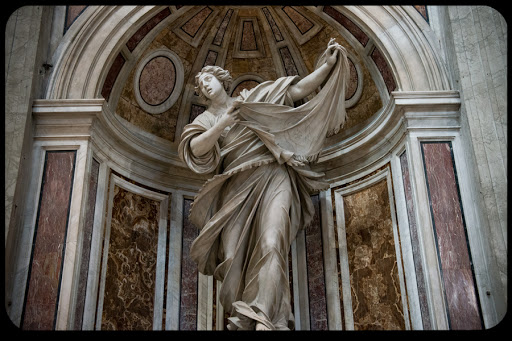Painting.
The very noun is also a verb. Inherent in this double use is a philosophy of art, little understood, if not intentionally obscured, from the minds of contemporary culture and its mass production. It is the simple aesthetic fact that art lies not in the artifact, nor does it rest with the artist, but is in the act of making. In this way, neither the poster nor the oil canvas is art, but artifact; the art is the act of painting of the oil painting.
Art, then, is not the artifact of making, as we so often might suggest, and it ought not be confused with a mass produced mimesis of an original artifact, whether that be a music recording, a book, or a poster. These are artifacts of artifacts, whose art was the mass reproduction of the artifact, making such far less valuable than the original artifact, which was in turn, less valuable than the live spectacle of the art itself. Something to keep in mind in the rising age of the 3D printer.
The truth is, if one wishes to experience art, one must be the artist engaged in the act of crafting. The closest the non-artist can get is the spectacle, that is, to be in an audience. The live concert is expressly more valuable of an experience than the digital or mass produced recording, and not only because of the limited quantity of seats to cover the expense of a musician’s show. It is because at the show, one can experience a spectacle that can never be reproduced in an authentic way, the making itself, that is, the art. The text, the sculpture, the painting, these are artifacts of art rarely observed. Even the concert or the drama unfolding is but a portion of the art unfolding once and only once after a great deal of preparation, that is after a great deal of practice, or in the case of literature, revision or editing: this is the craft.
Even the critics are subject to this aesthetic principle. After all, the artifacts and their makers are characterized as parts of movements, not of groups, or marketing niches, or ideologies, but of movements containing similar, but not always clearly demarcated, characteristics, for such is the imperfect observatory and after-the-fact nature of the critic’s making. And here, too, in the making of the artifact of criticism, is a kind of art, albeit a technical art of pragmatic ends and not a fine art whose aim is beauty.
Thus, we come to the question of aesthetic value, and say pragmatically, what is this artifact worth to such and such a market, and what of the mass produced versions of it? But the performance, the performance of a master, to see it, if it is indeed a spectacle the master will put on display for more than her apprentice, what is that worth, if the making is to remain a fine art? What is beauty worth in a digital age?
Its scarcity, as ever in human history, ranks it as invaluable, but for that to be recognized, there must be persons with a taste for recognizing beauty as such. And in an age where reproductions come across the riding of wireless waves and at the easy pace of the flow of a few thousand electrons, who, indeed, has the time to count such a cost?
D. V. Andrews received his M.F.A. in Creative Writing from St. Mary’s College of California in 2008. His B.A. in English Literature is from Washington University in St. Louis.

